Hi, folks. I just found out about this site a few days ago. I've been working on rebuilding a dead chopper my dad built back in '75 for several years, and just *might* get it running by this fall.
Here's the basic history:
He bought a crated FLH engine from a Harley dealership in California in 1975 and built a bike around it on his boat while he was in the Coast Guard. At some point he changed the frame (to what I have now), which then changed the titled year to 1978. In 1981, the dreaded left-hander-in-an-intersection took him out. The front forks were tweaked, rim damaged, and his ankle was badly twisted. He was a construction worker, with four kids (I'm the oldest), so into the shed it went.
It sat for the next 27 years, until I talked him into giving it to me. My dad has only owned Harley's bikes (aside from a Triumph chopper he built decades back) and I've never owned a Harley. I don't ever plan on buying one; I love sport standards too much. Had this been a chopped CB750 or GS1000, I'd still want to resurrect it: My dad built it.
When I got the engine, transmission, tanks, and frame, it was in SORE shape. I eventually had to tear apart the entire engine and replace all the internals--during its years-long "rest", condensation got into the engine and destroyed it. The transmission was shot, so I bought a used one in a slightly less poor state and completely rebuilt it.
Side note: Prior to this project, the most complicated, in depth project I ever accomplished was replacing fork springs in my SV650. I learned a LOT on this Shovelhead project, which is where www.shovelhead.us/forum comes in--most of the members there are old graybeards who walked me through it, saving me thousands in labor and parts by either holding my hand as I fixed something or sending me parts for dirt cheap (such as a perfectly serviceable rotating assembly for the cost of shipping).
Anyway, now that you're all bored with my story, I'll start posting up some porn, er, uh, build pics.
The bike, as my dad delivered it. Mind you, he drove from TX to MD to bring it to me:
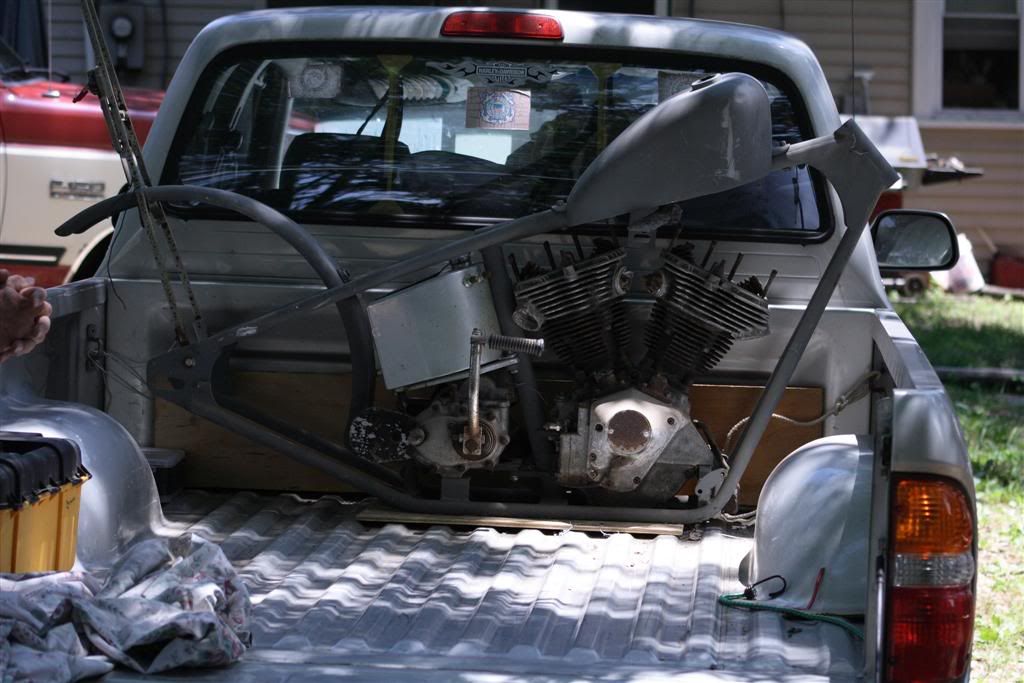
In the house I was renting at the time:
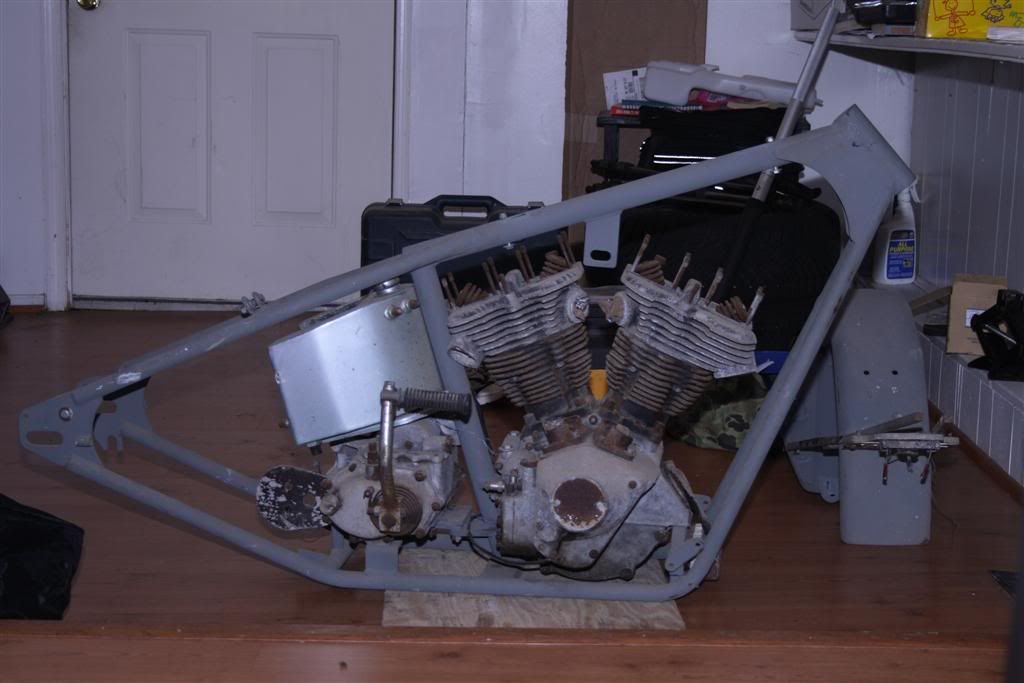
Remember where I said I didn't know what I was doing? Here's how I got the cylinders free from the pistons--lumber and a rubber mallet. I'd knock the piston in one cylinder down a bit, lift the cylinder, and place a block of wood on it. Repeat. Took more than two hours, and I had blisters when done.
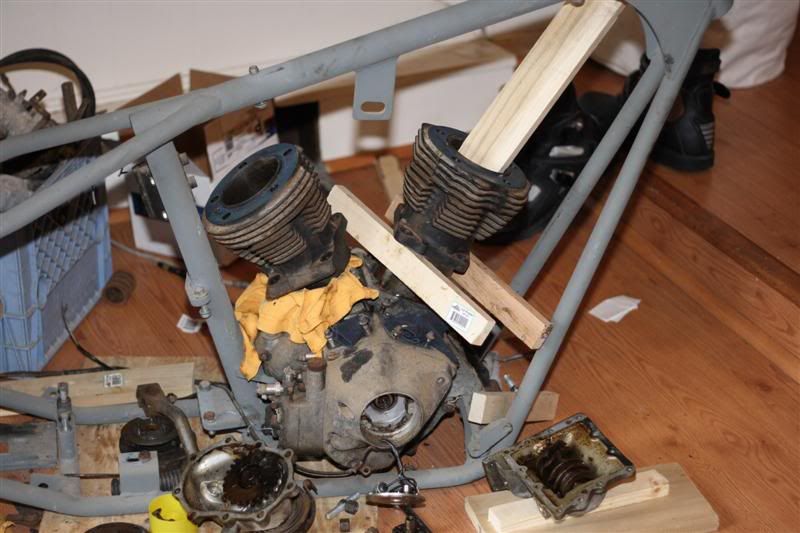
A close up of a head to show how badly it was corroded:
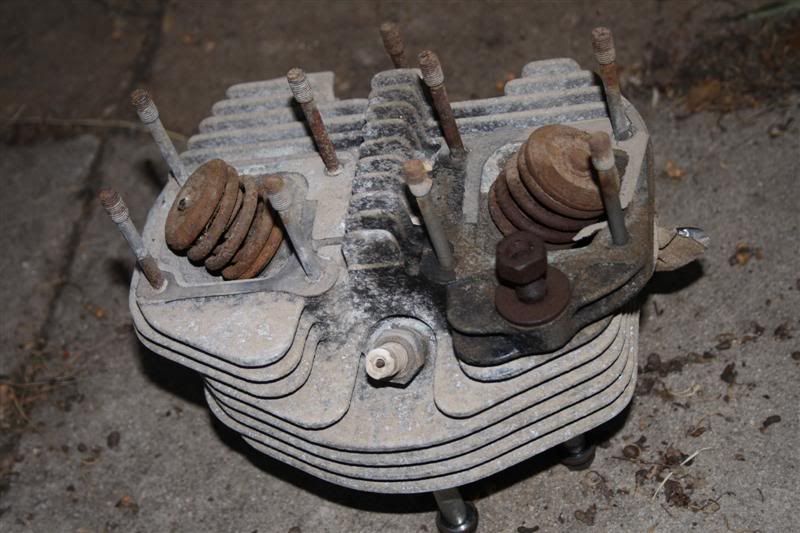
After having it blasted, it looked new:
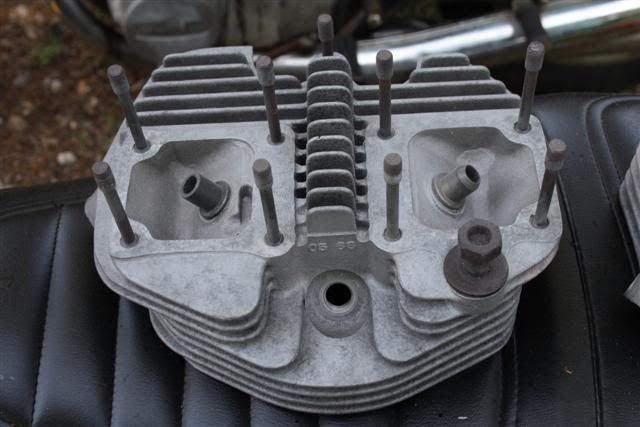
At this point, the bike was put aside, as I didn't have the money to keep working...it needed LOTS of EXPENSIVE parts. So, about three years later I finally got started again. At this point, I finally opened up the lower case and found water in the oil:
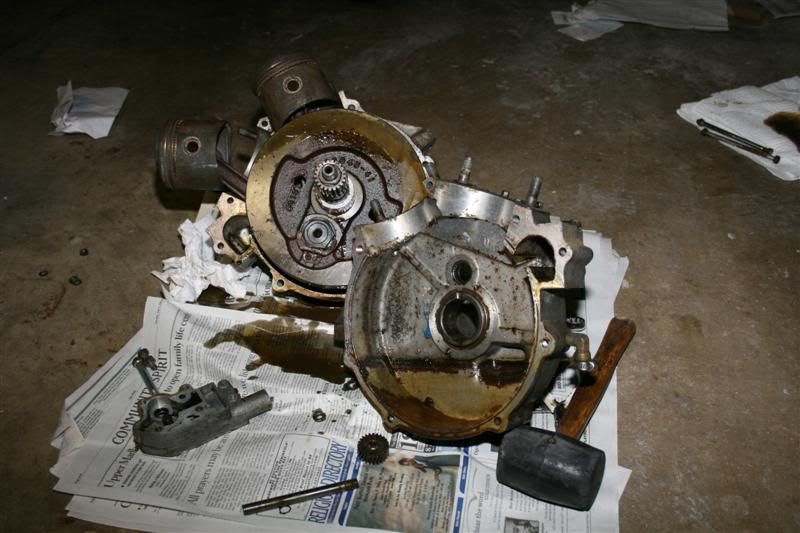
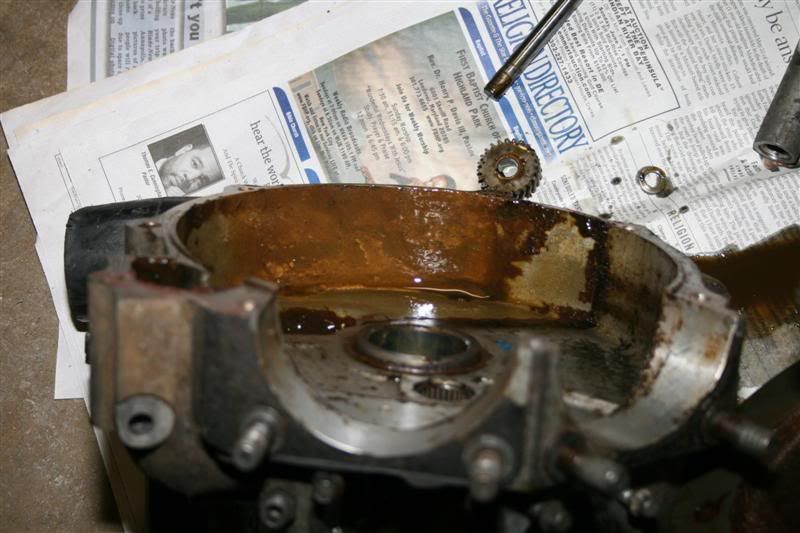
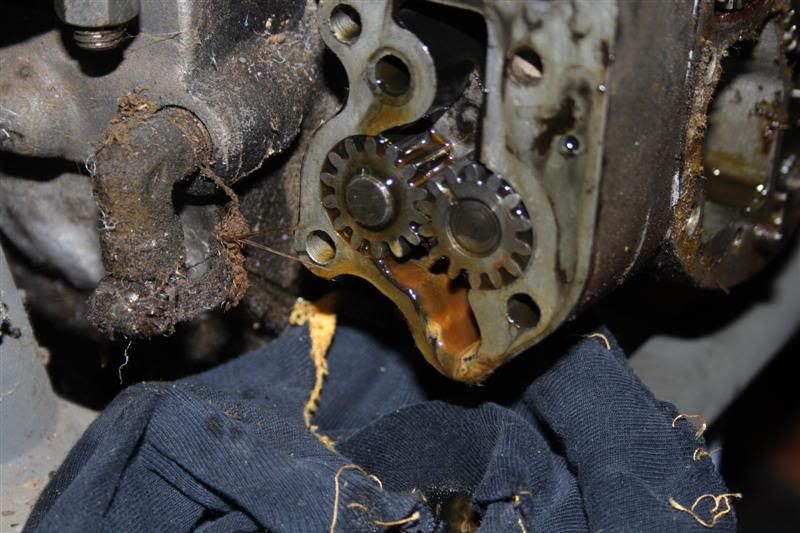
Next post will start showing improvements and the beginnings of hope.
Here's the basic history:
He bought a crated FLH engine from a Harley dealership in California in 1975 and built a bike around it on his boat while he was in the Coast Guard. At some point he changed the frame (to what I have now), which then changed the titled year to 1978. In 1981, the dreaded left-hander-in-an-intersection took him out. The front forks were tweaked, rim damaged, and his ankle was badly twisted. He was a construction worker, with four kids (I'm the oldest), so into the shed it went.
It sat for the next 27 years, until I talked him into giving it to me. My dad has only owned Harley's bikes (aside from a Triumph chopper he built decades back) and I've never owned a Harley. I don't ever plan on buying one; I love sport standards too much. Had this been a chopped CB750 or GS1000, I'd still want to resurrect it: My dad built it.
When I got the engine, transmission, tanks, and frame, it was in SORE shape. I eventually had to tear apart the entire engine and replace all the internals--during its years-long "rest", condensation got into the engine and destroyed it. The transmission was shot, so I bought a used one in a slightly less poor state and completely rebuilt it.
Side note: Prior to this project, the most complicated, in depth project I ever accomplished was replacing fork springs in my SV650. I learned a LOT on this Shovelhead project, which is where www.shovelhead.us/forum comes in--most of the members there are old graybeards who walked me through it, saving me thousands in labor and parts by either holding my hand as I fixed something or sending me parts for dirt cheap (such as a perfectly serviceable rotating assembly for the cost of shipping).
Anyway, now that you're all bored with my story, I'll start posting up some porn, er, uh, build pics.
The bike, as my dad delivered it. Mind you, he drove from TX to MD to bring it to me:

In the house I was renting at the time:

Remember where I said I didn't know what I was doing? Here's how I got the cylinders free from the pistons--lumber and a rubber mallet. I'd knock the piston in one cylinder down a bit, lift the cylinder, and place a block of wood on it. Repeat. Took more than two hours, and I had blisters when done.

A close up of a head to show how badly it was corroded:

After having it blasted, it looked new:

At this point, the bike was put aside, as I didn't have the money to keep working...it needed LOTS of EXPENSIVE parts. So, about three years later I finally got started again. At this point, I finally opened up the lower case and found water in the oil:



Next post will start showing improvements and the beginnings of hope.

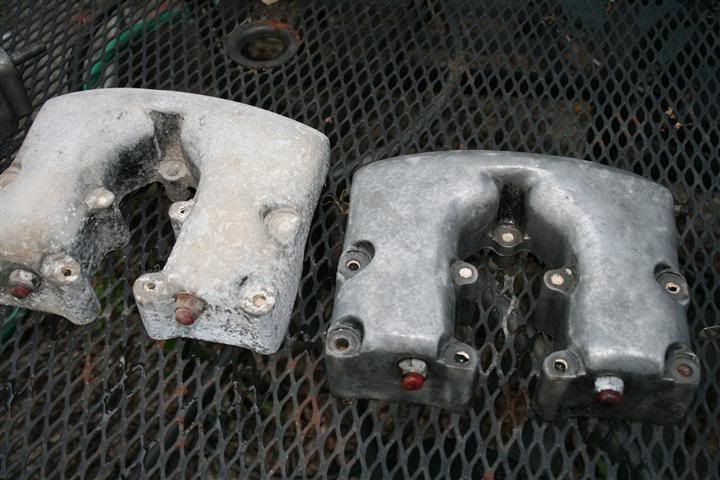
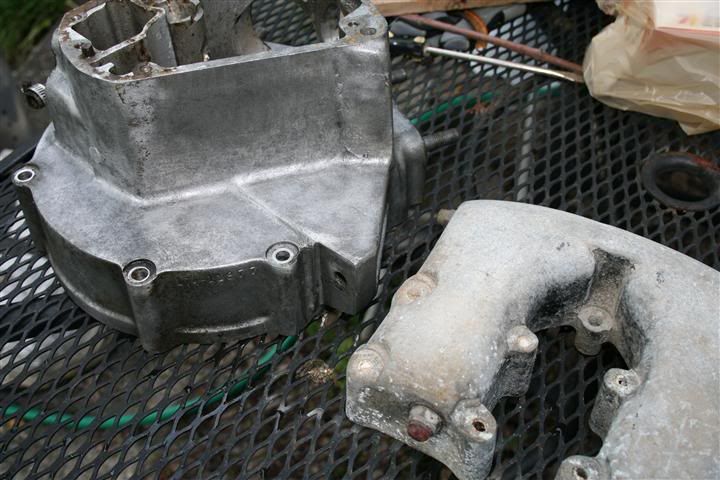
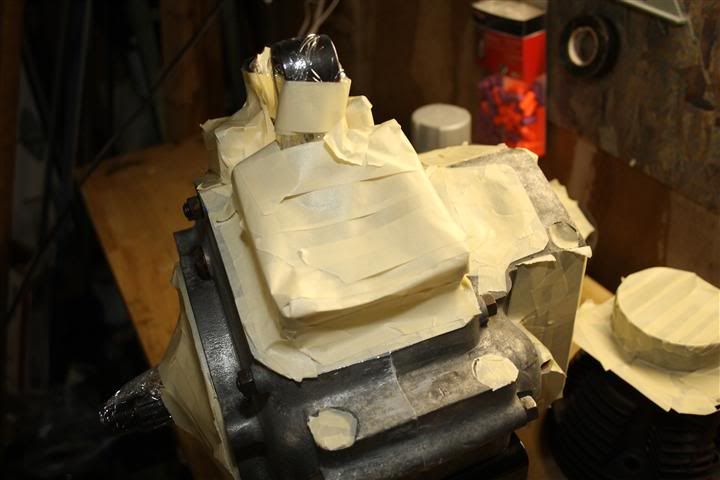
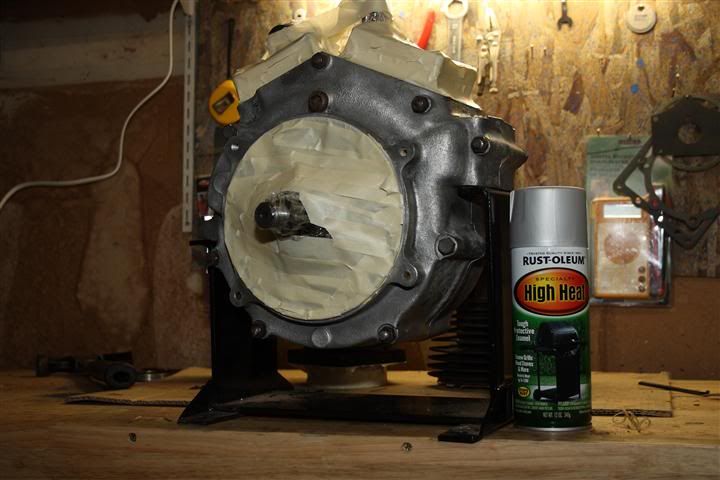
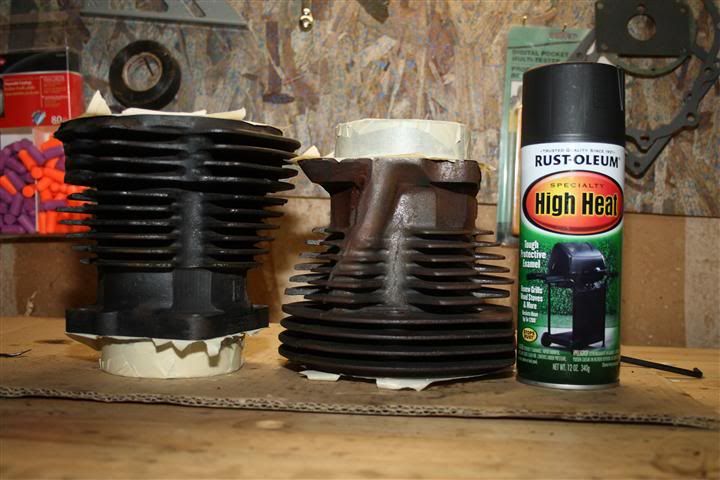
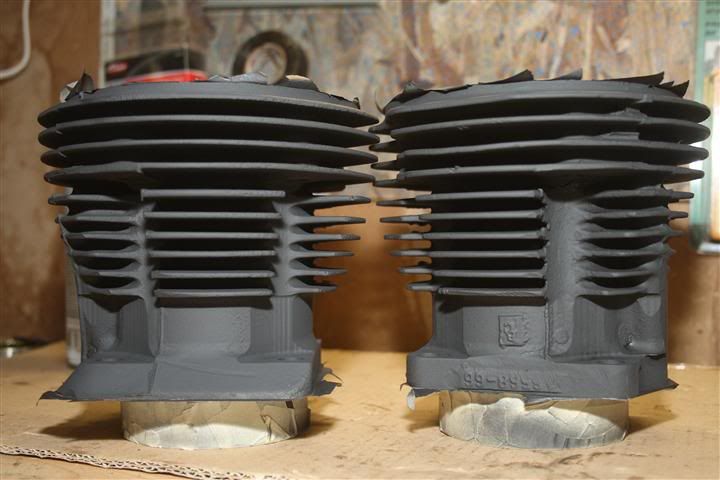
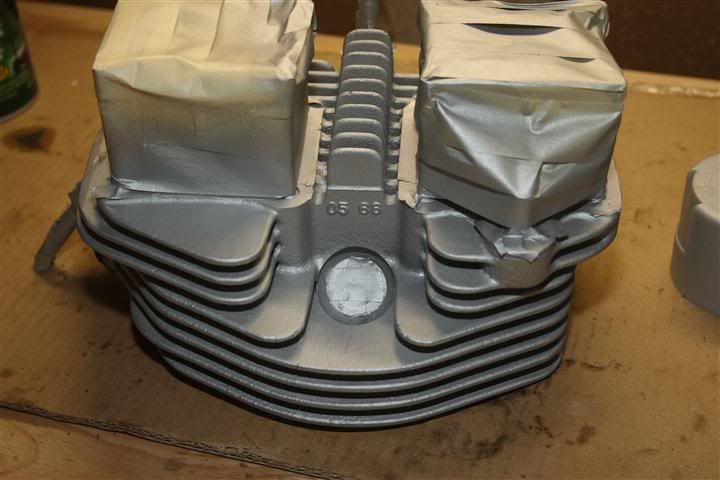
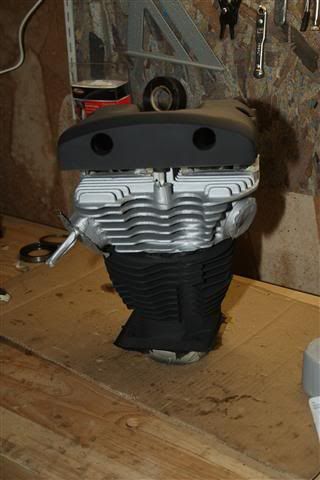
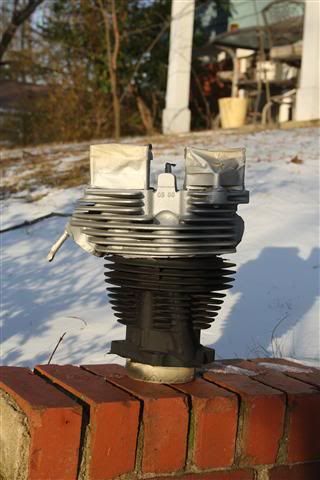
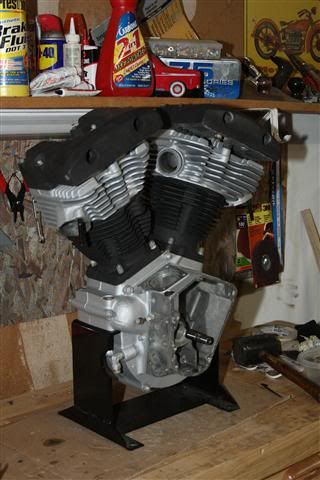
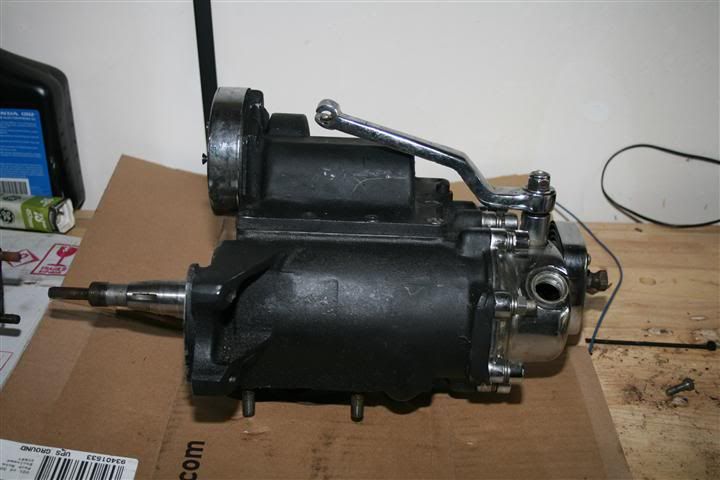
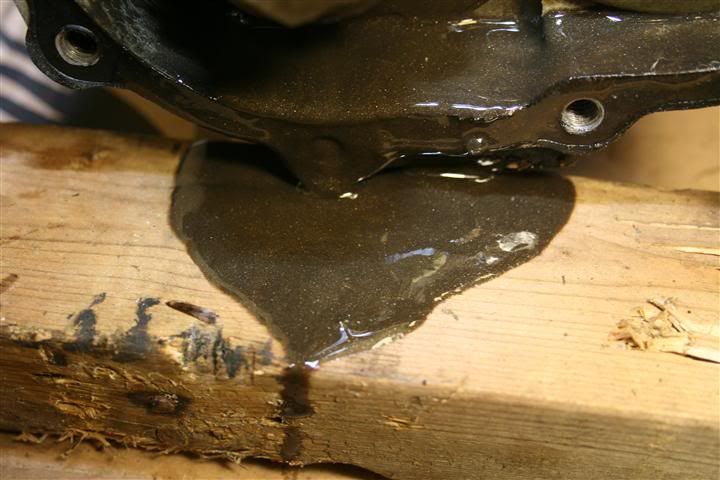
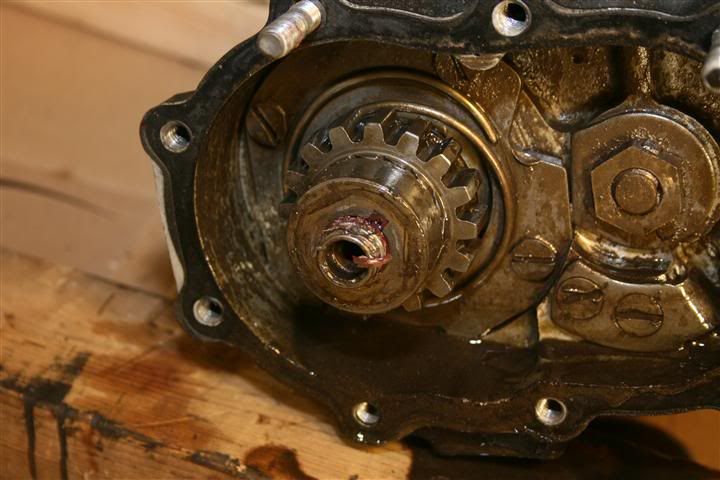
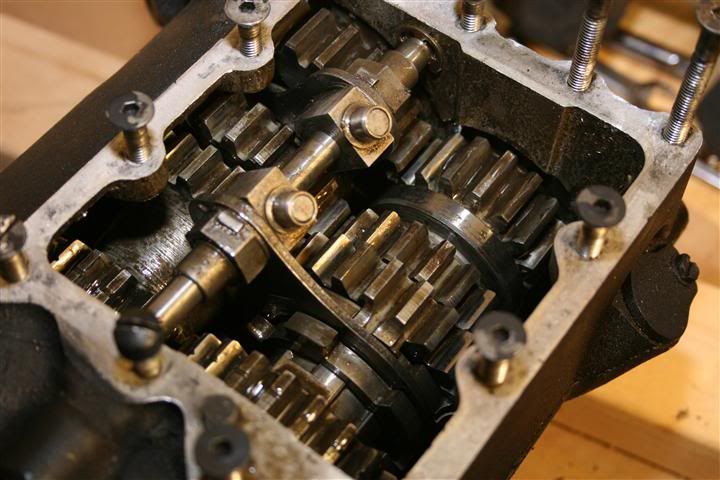
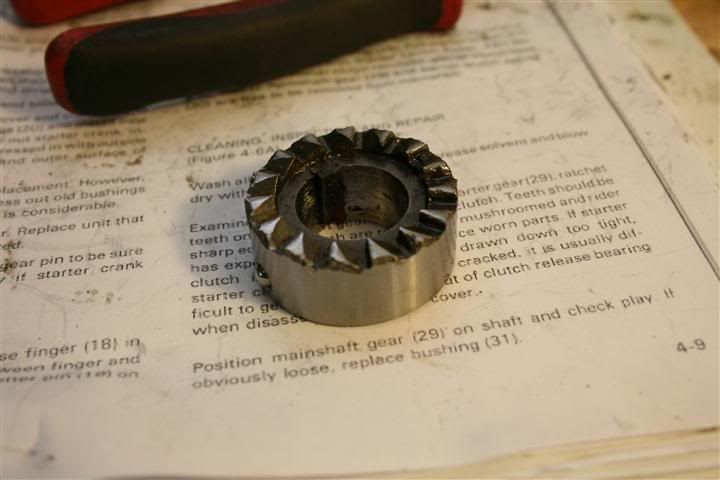
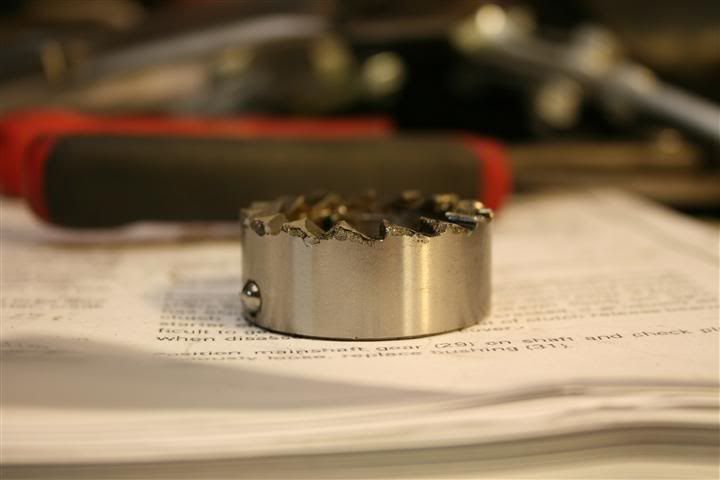
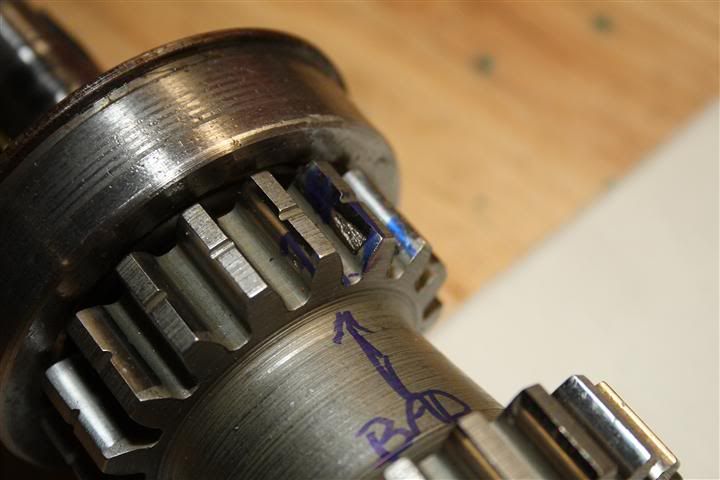
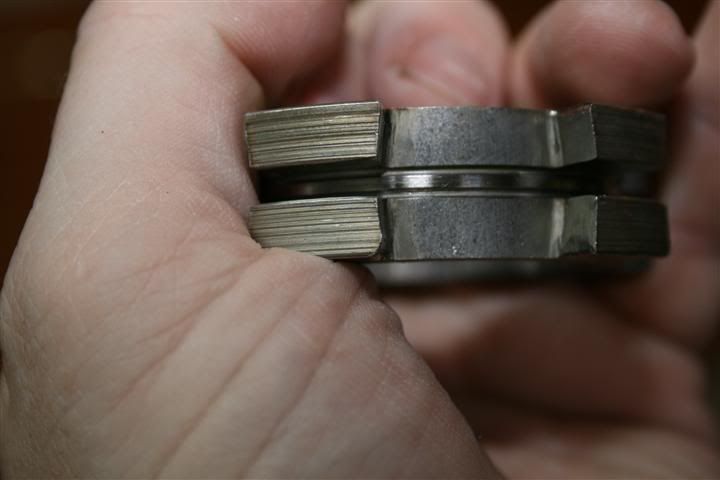

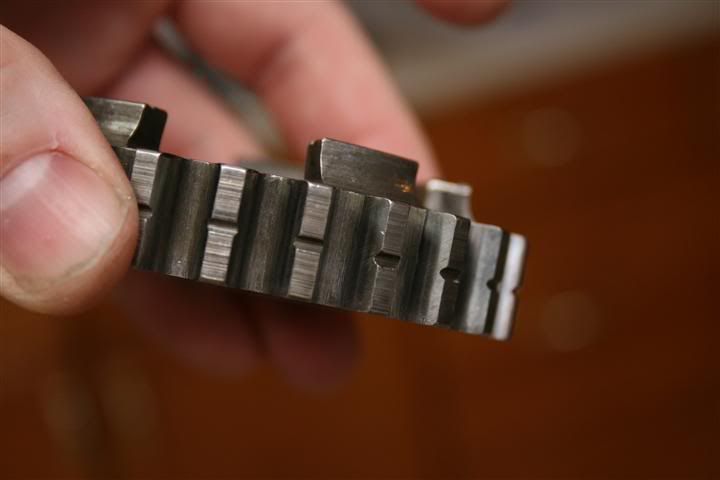
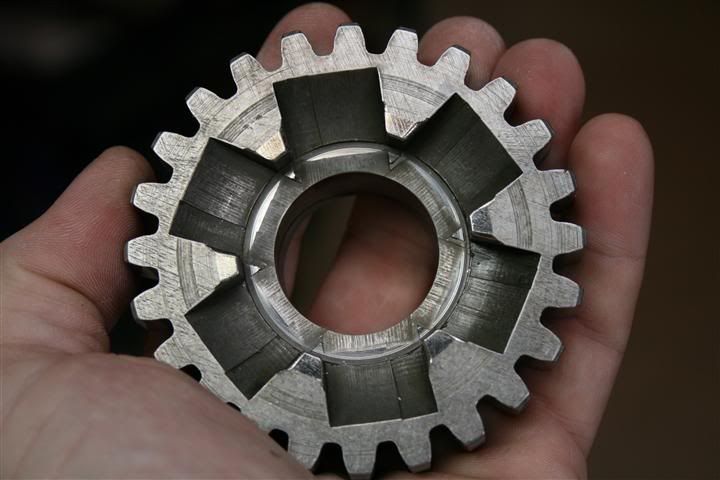

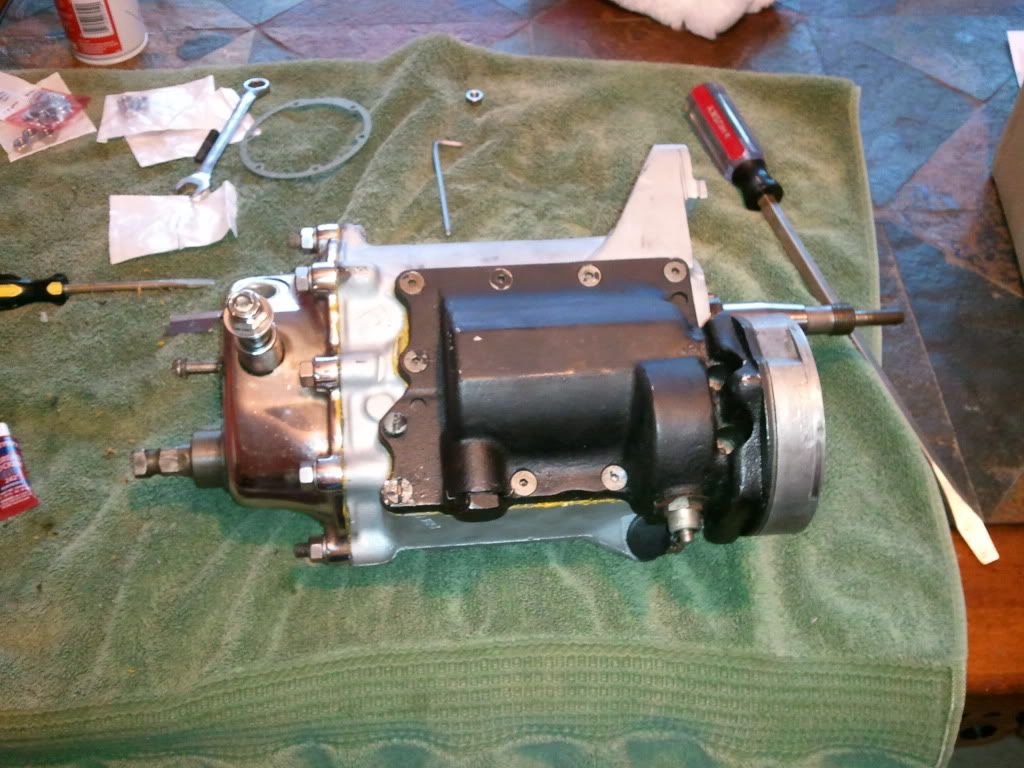

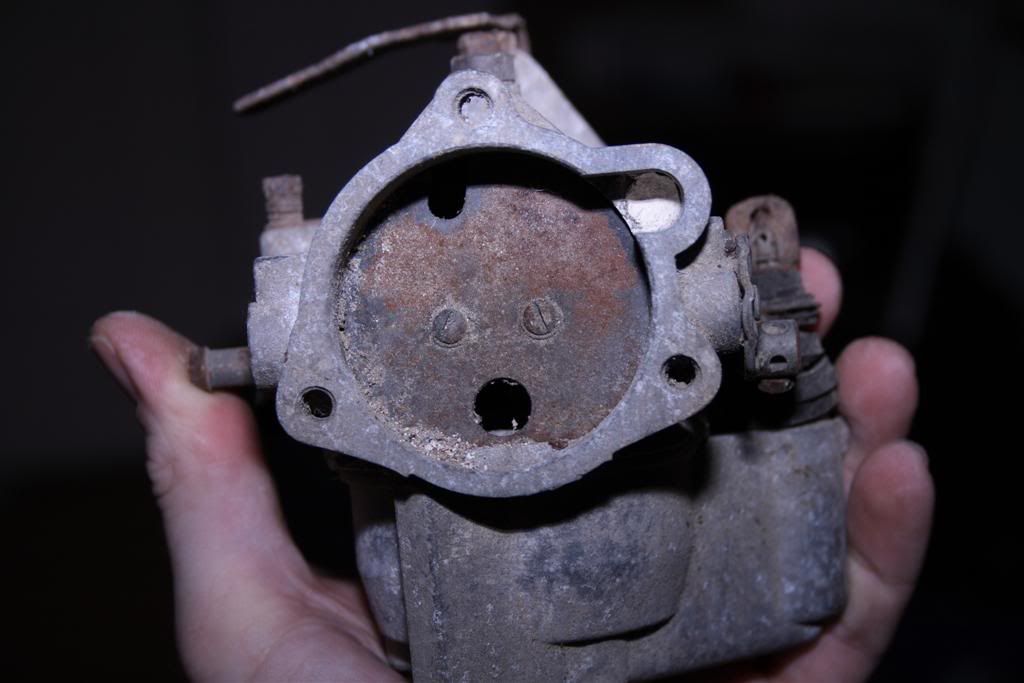


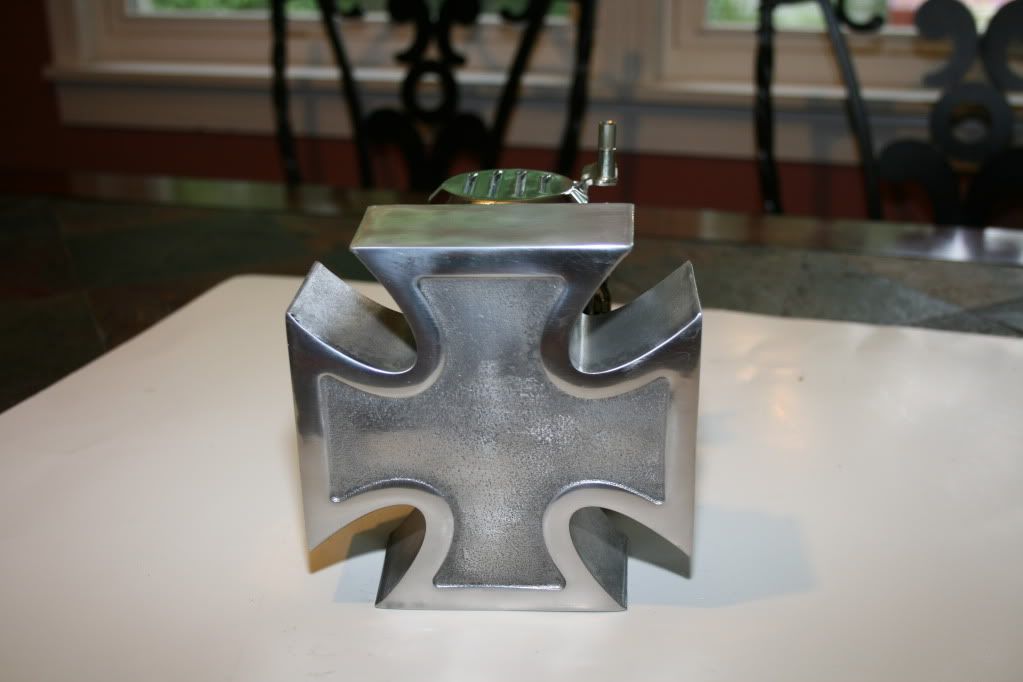
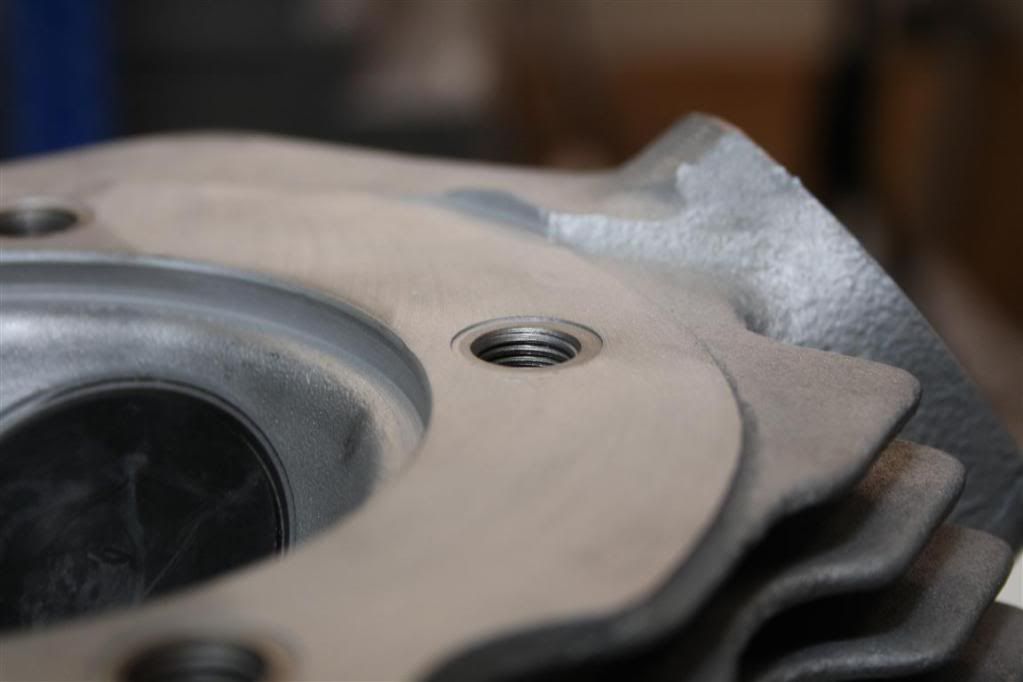
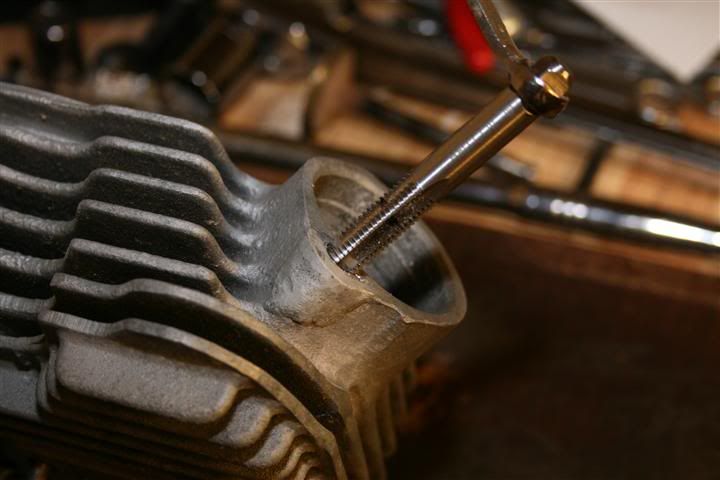
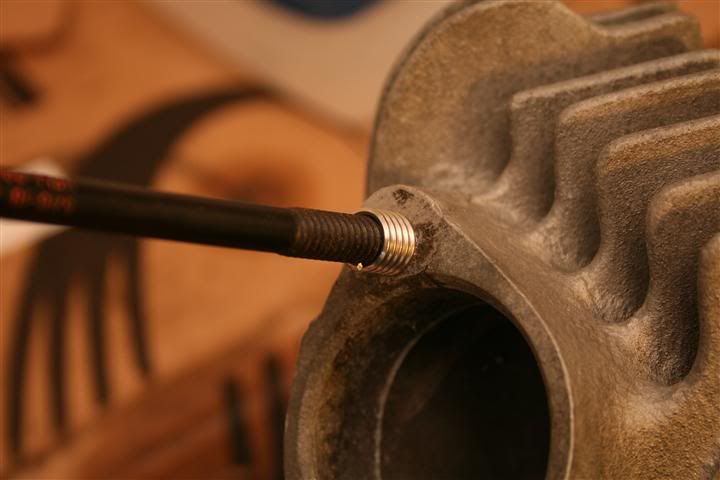
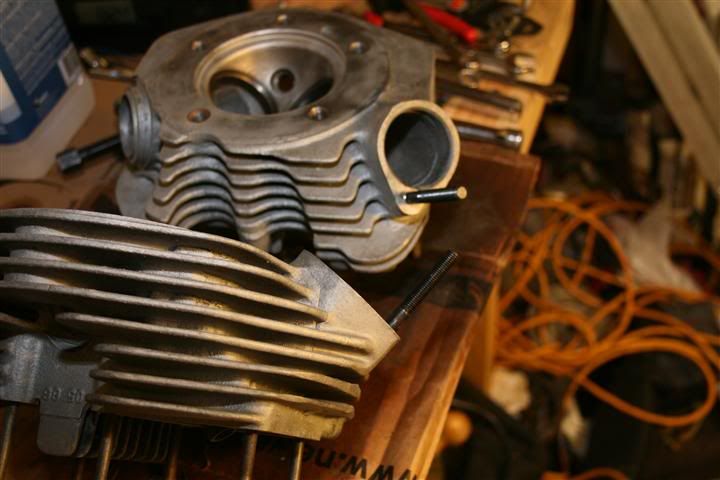
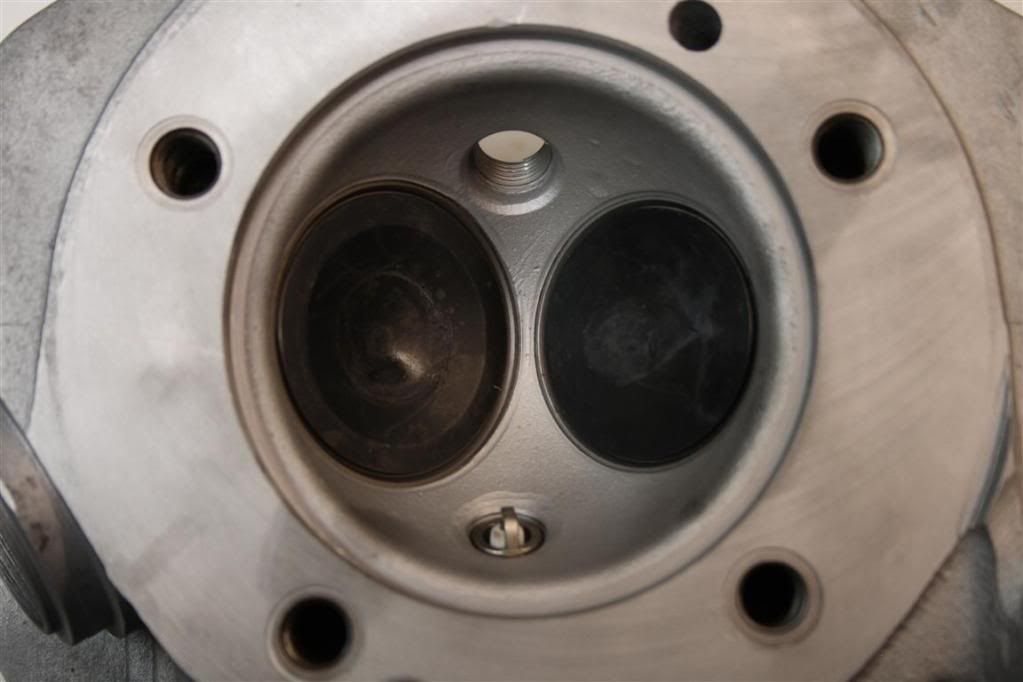
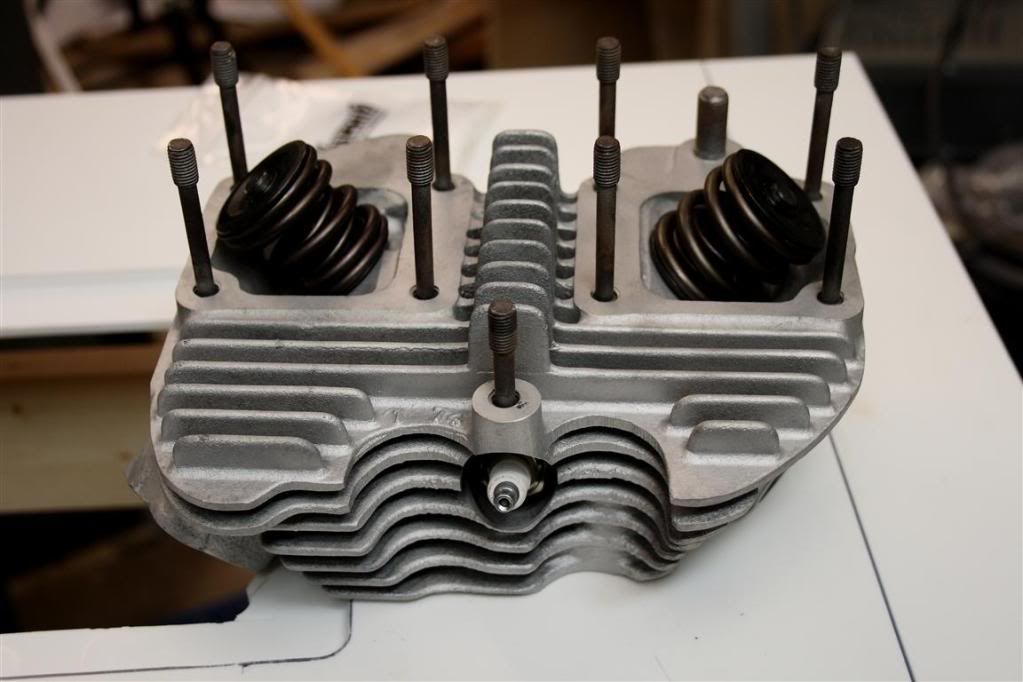
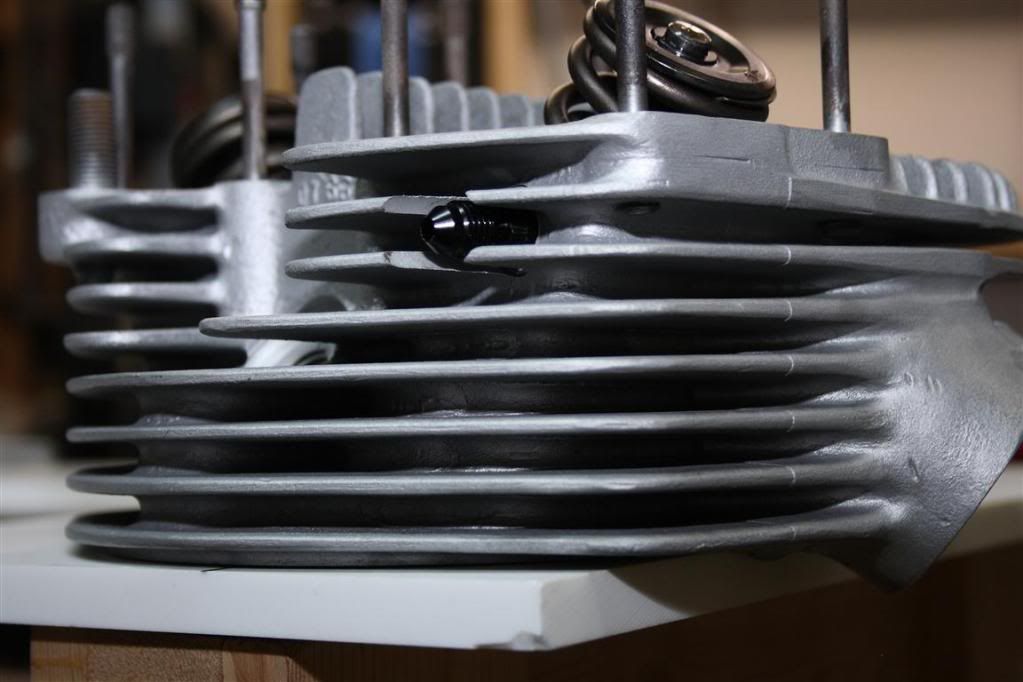

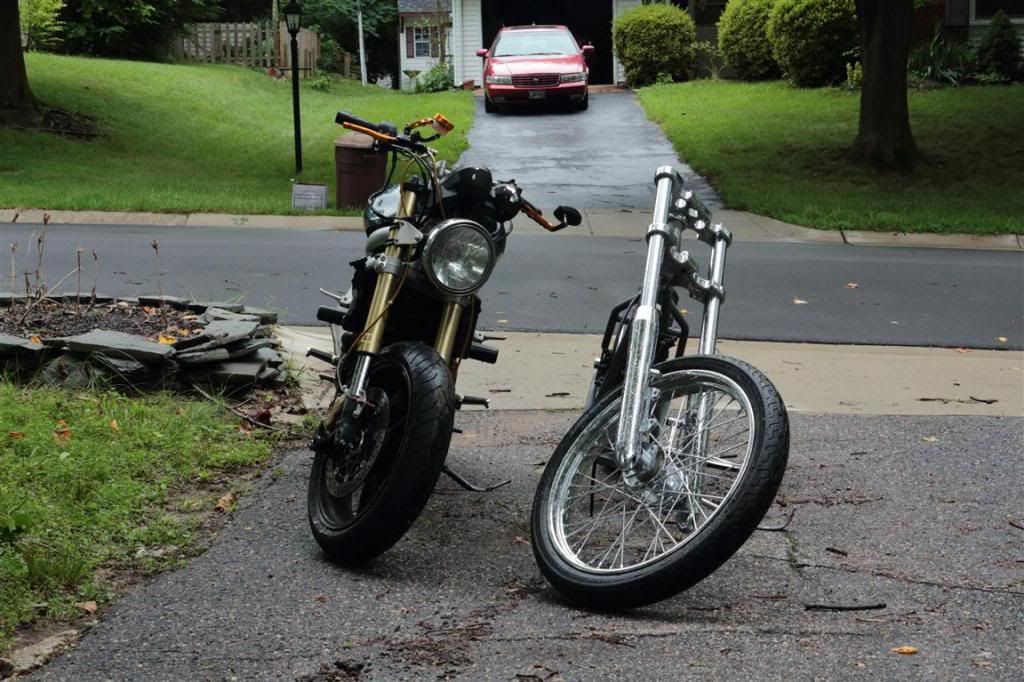


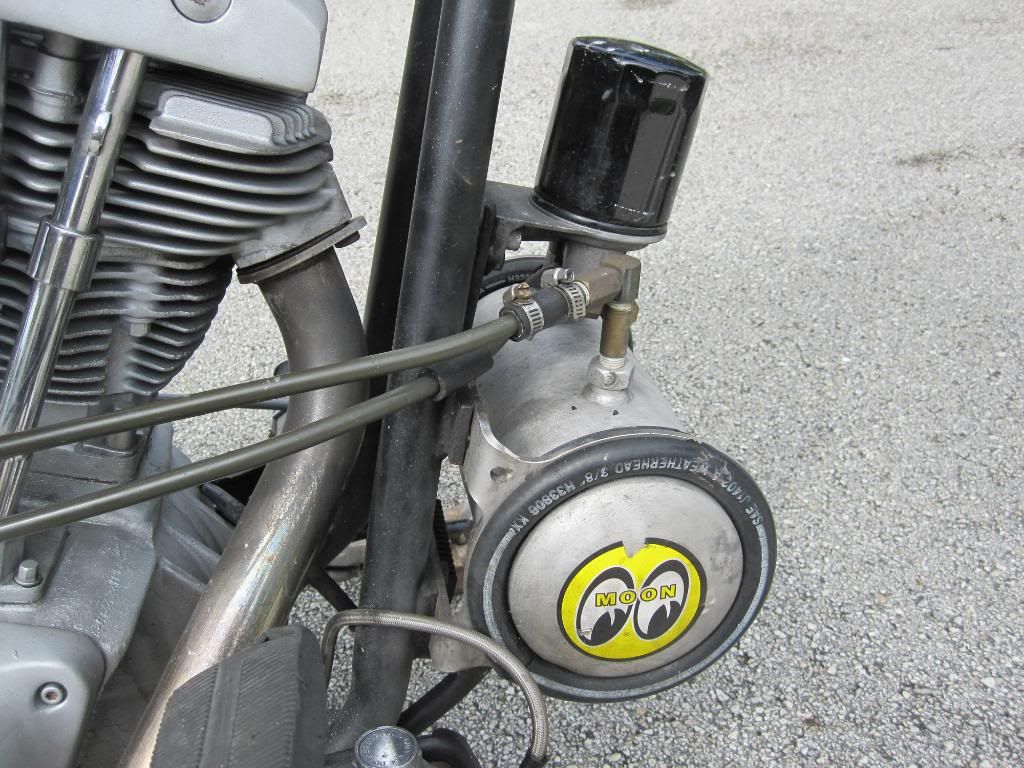
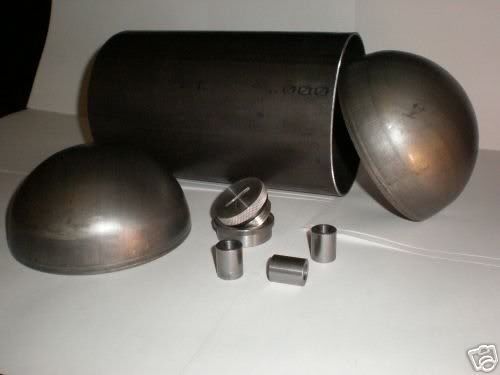




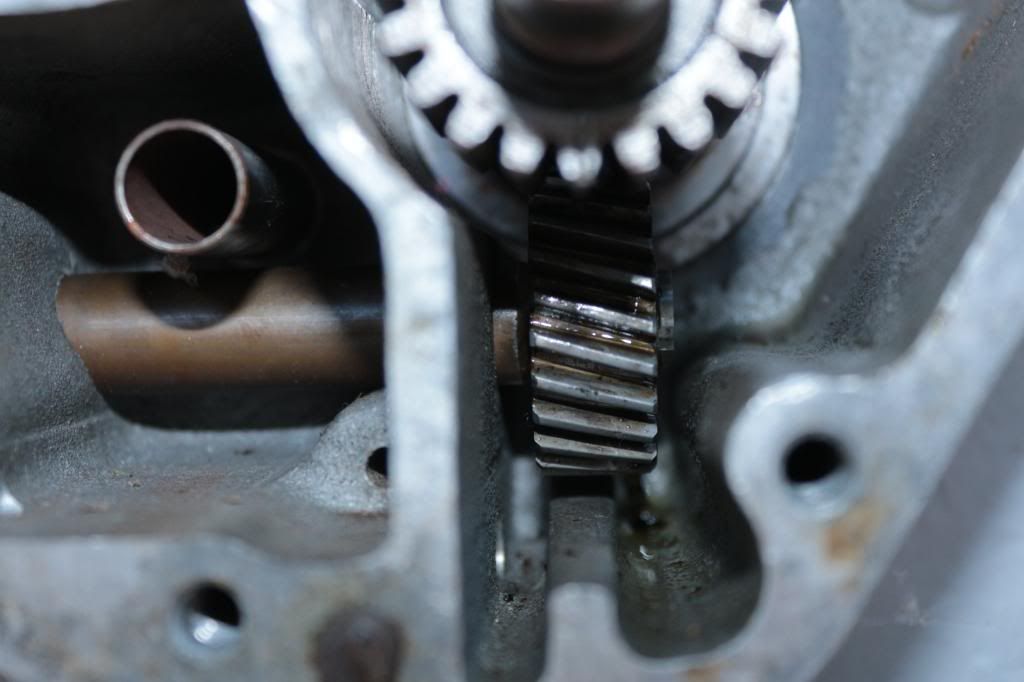
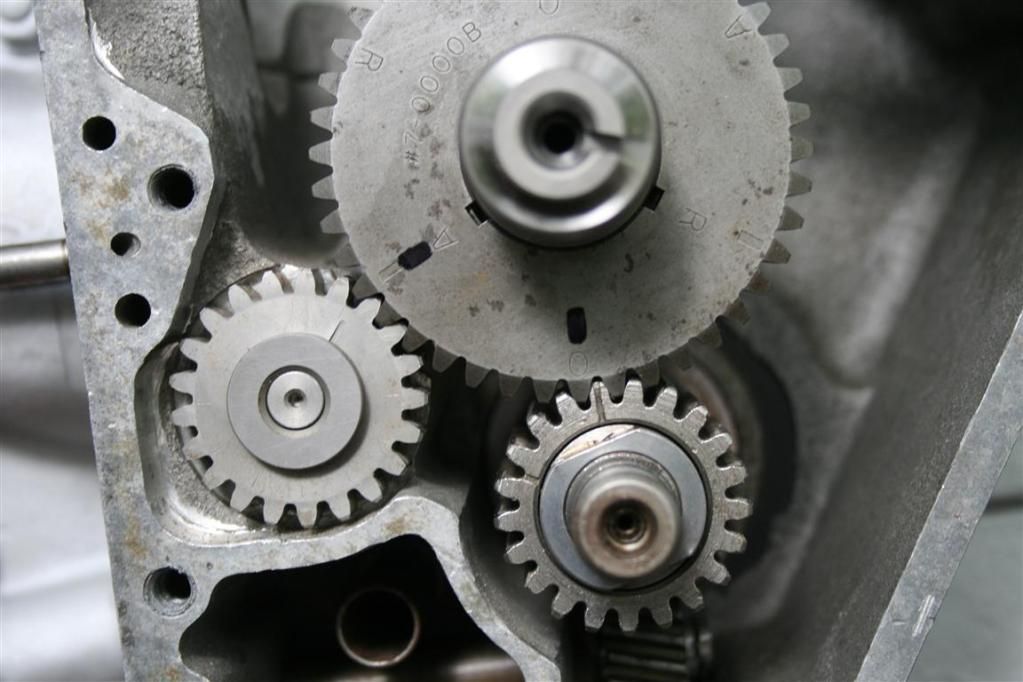
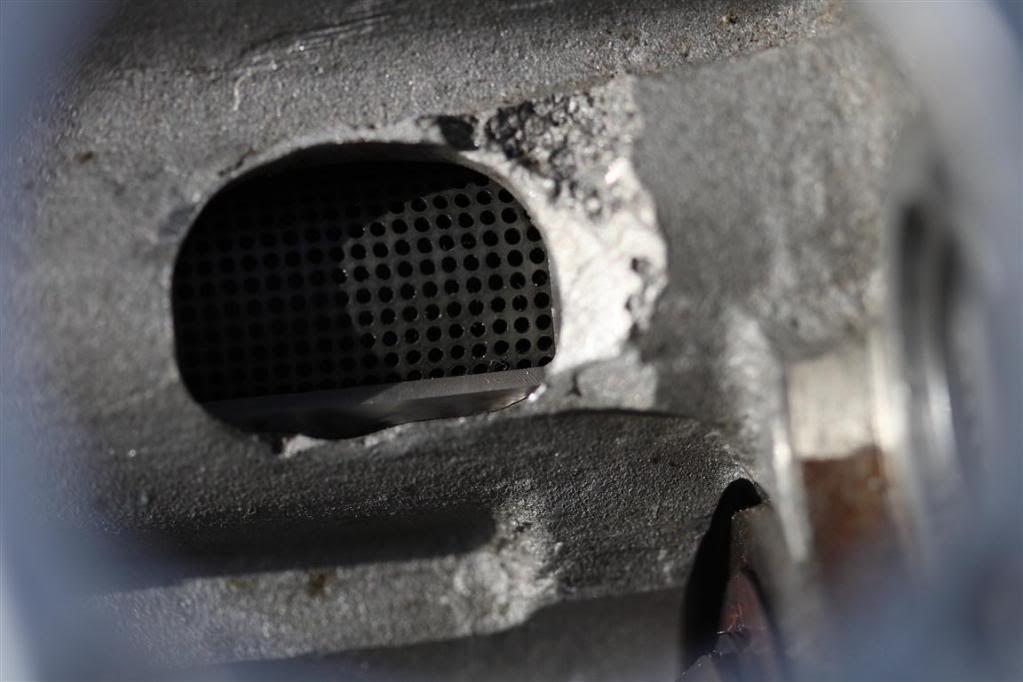
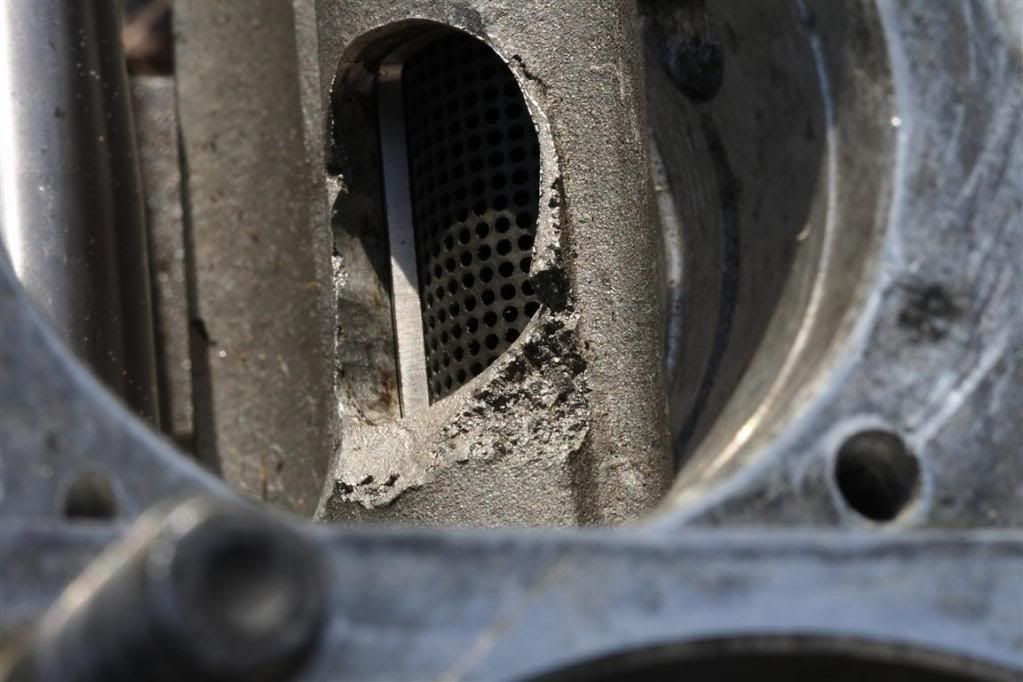
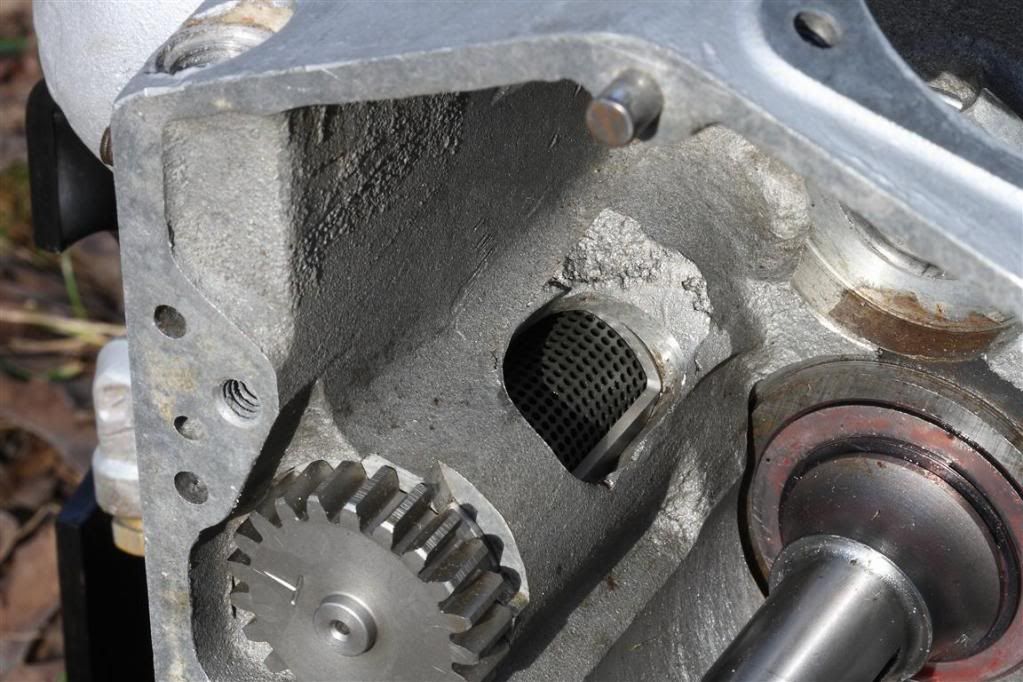

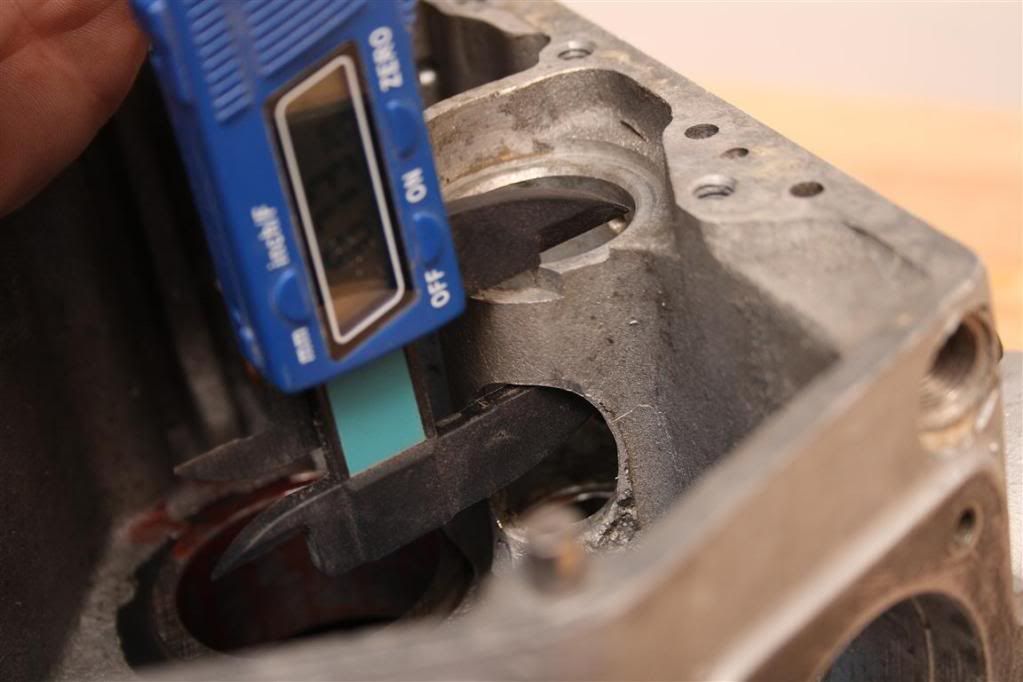

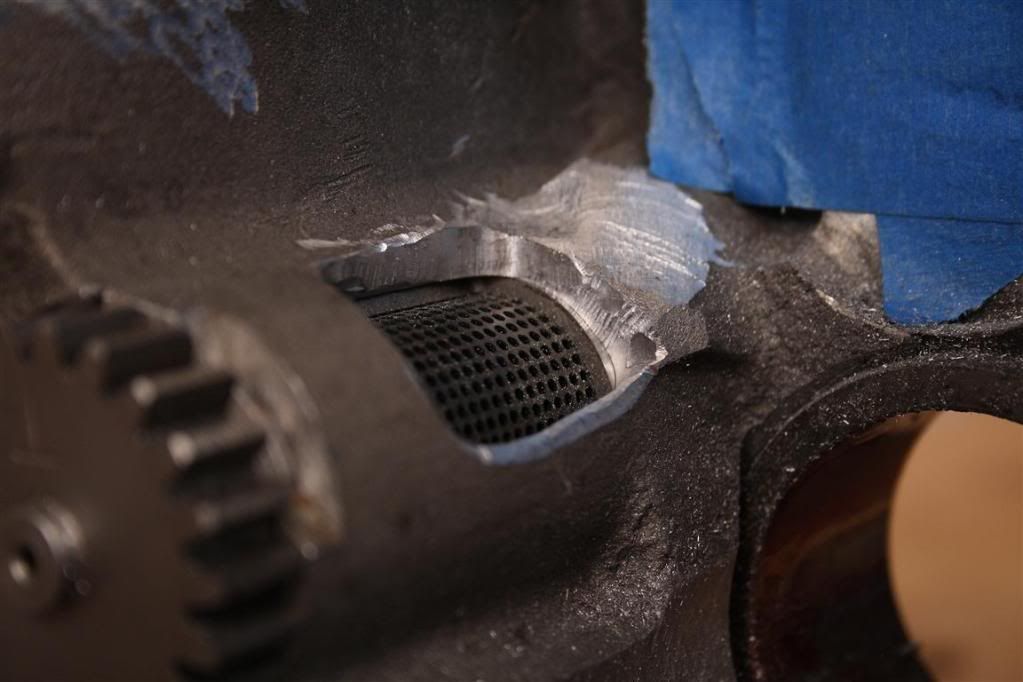
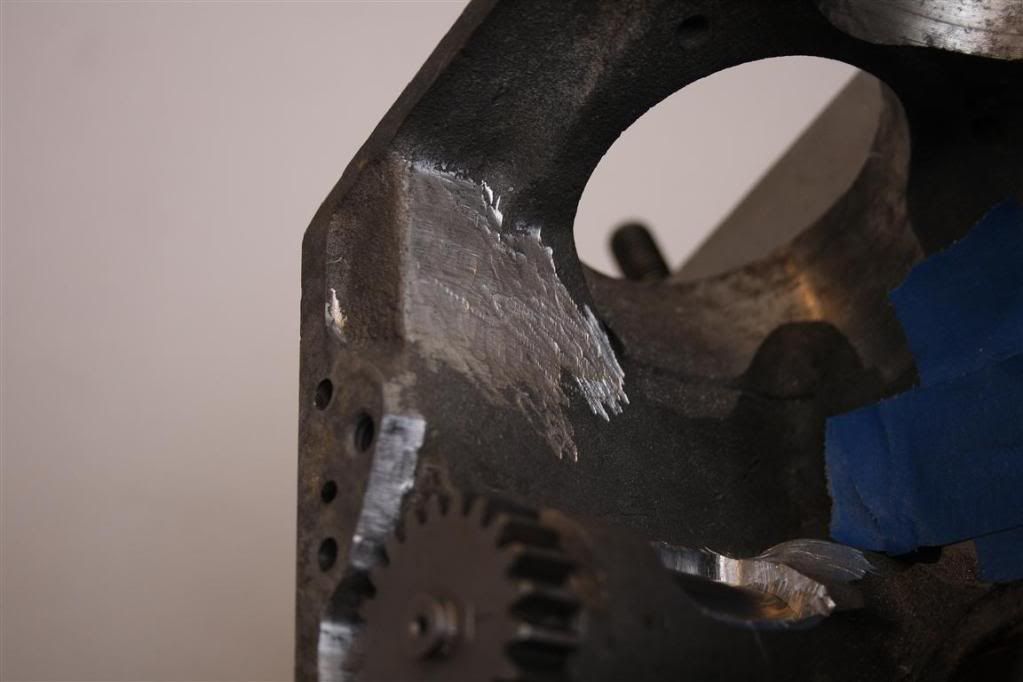






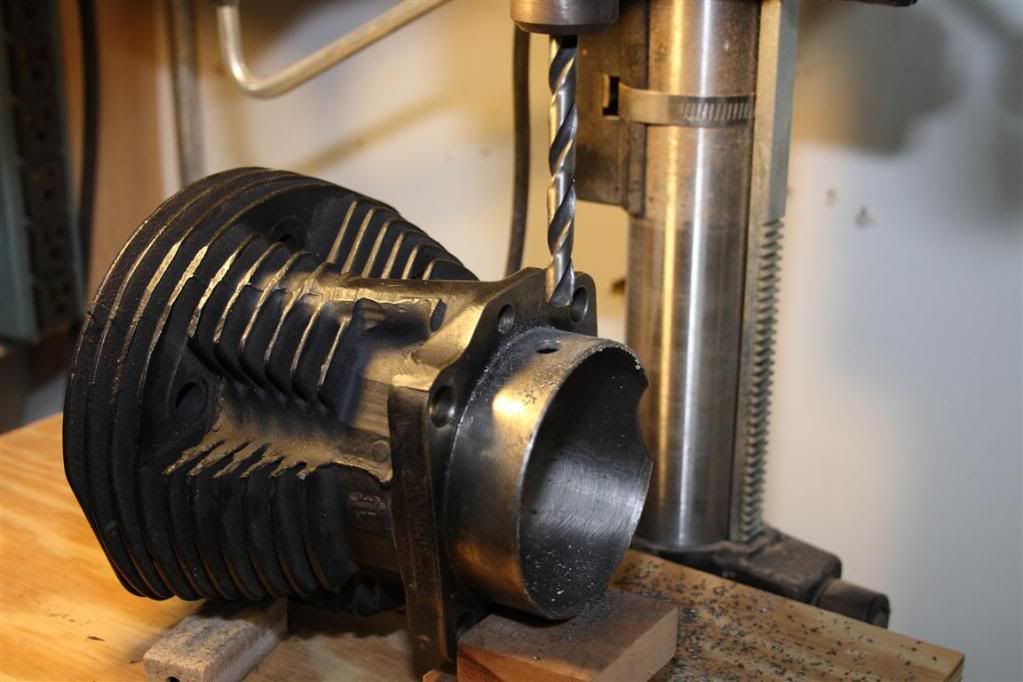
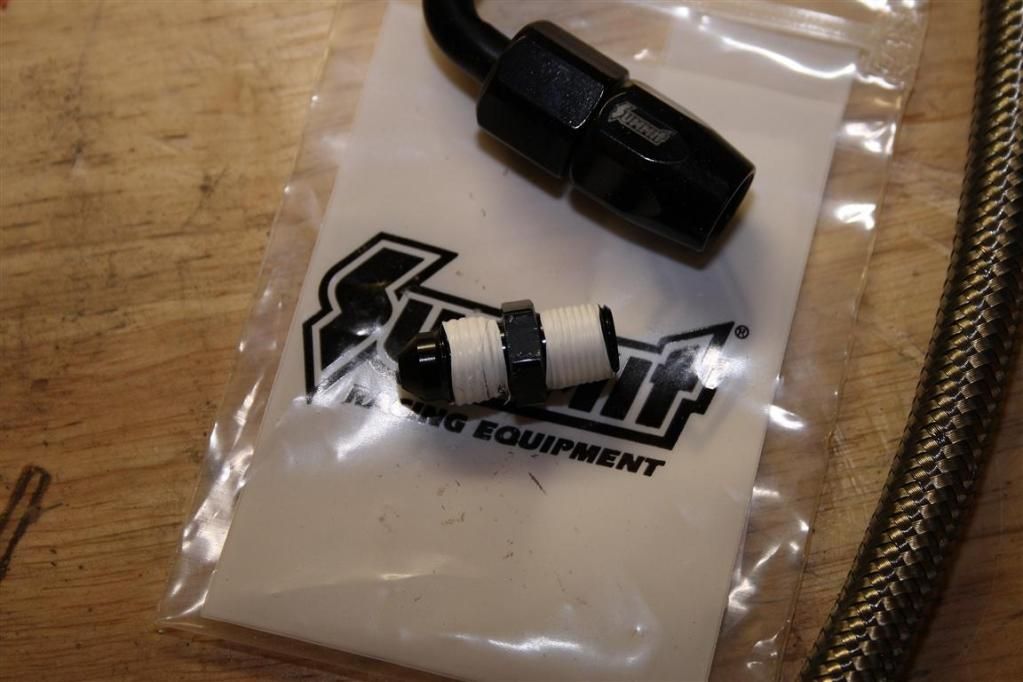

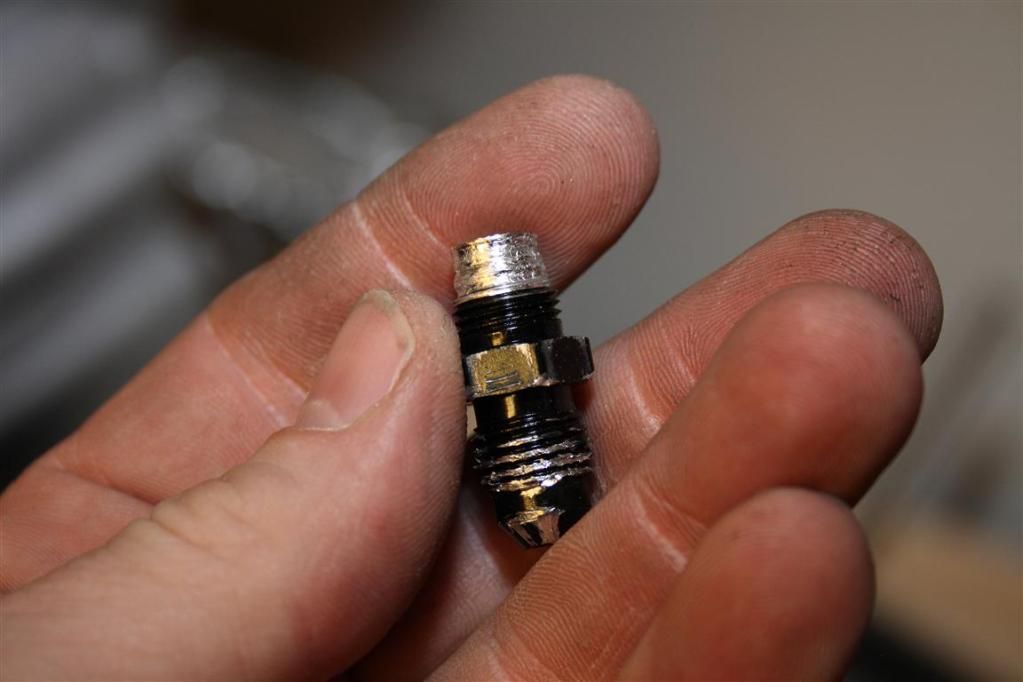
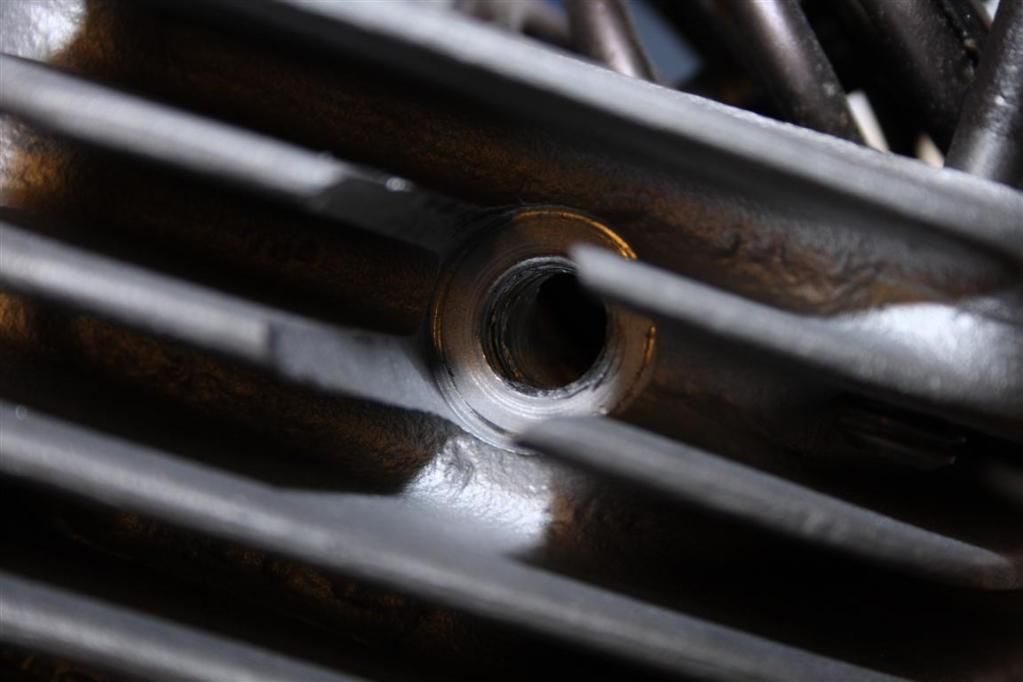
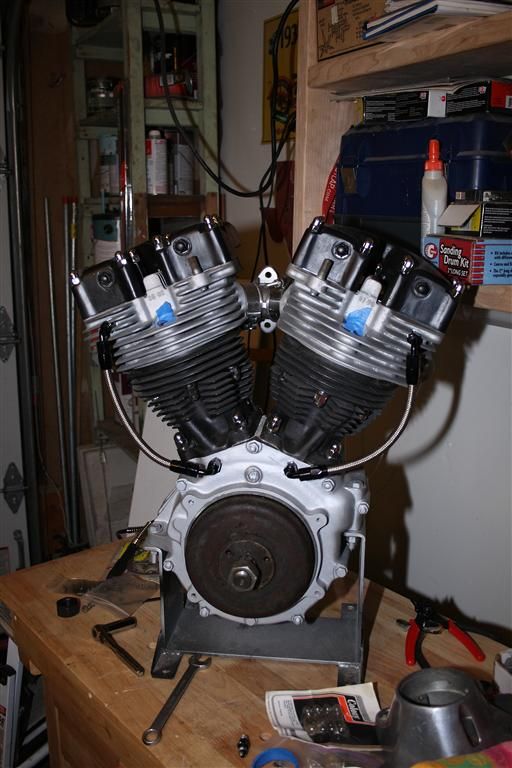
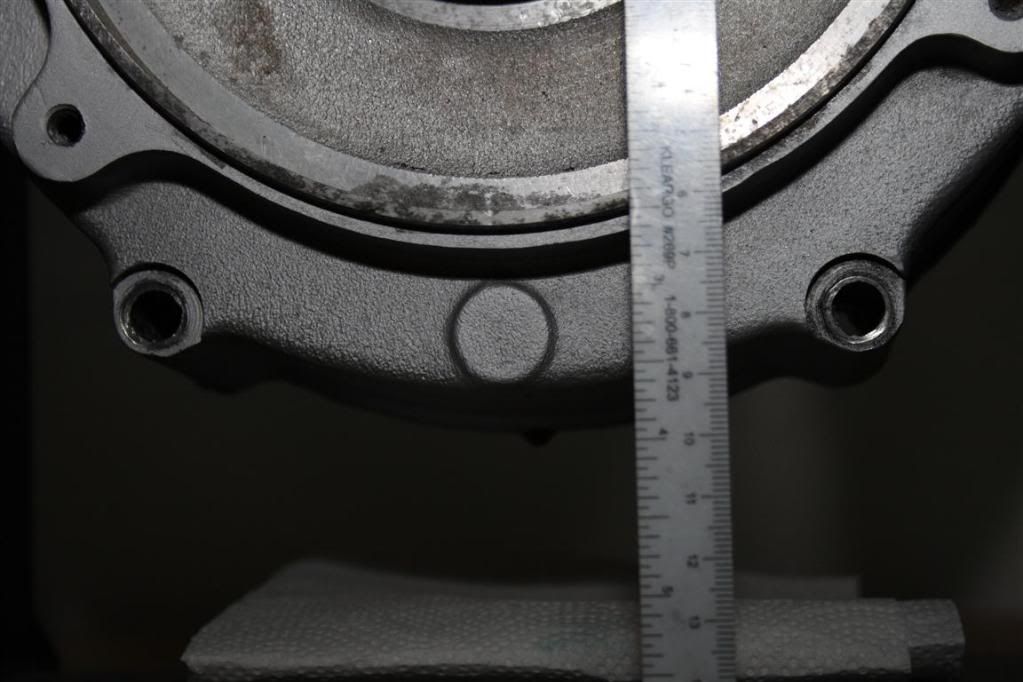
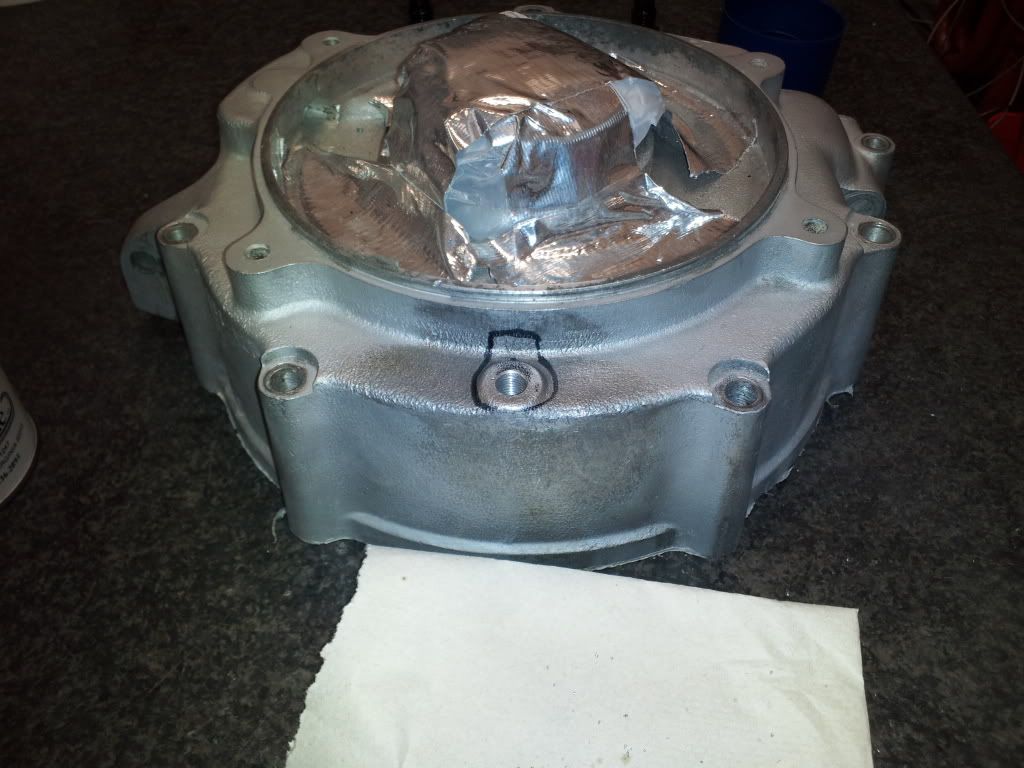
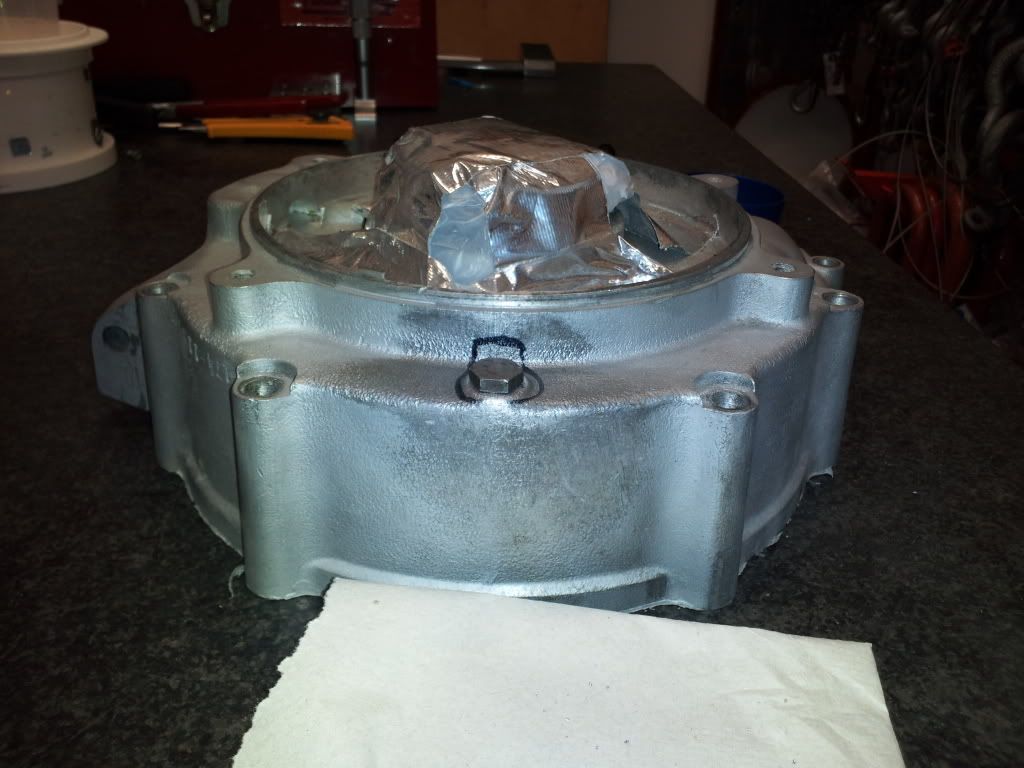
Comment